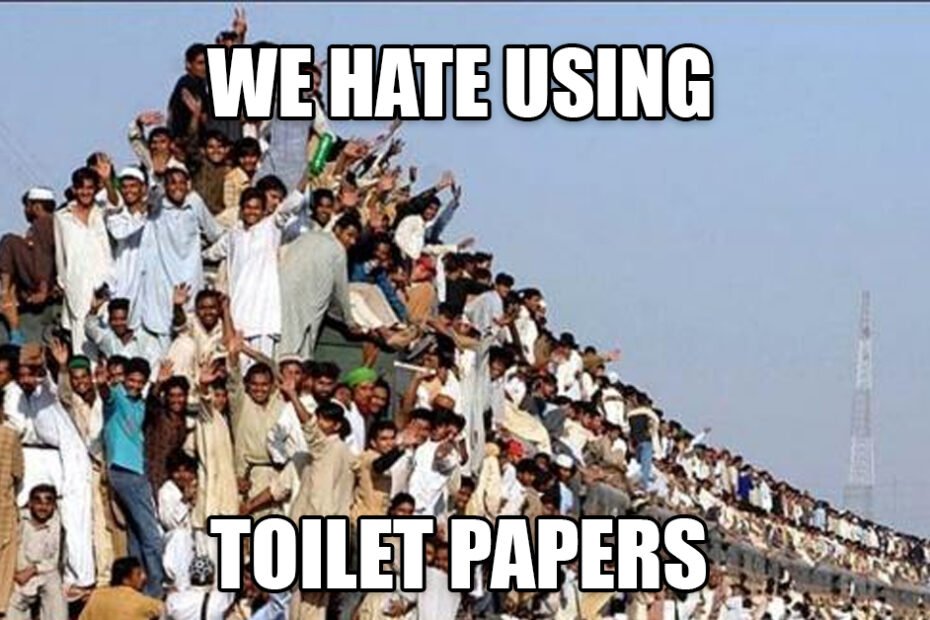Most Indians not use toilet paper because in India, the traditional method of cleansing after using the toilet involves using water and your left hand (or a handheld bidet or spray). This practice is known as “using a lota” or “istinja,” and is deeply rooted in Indian culture and religion.
The use of toilet paper is not as common in India as it is in many Western countries, mainly due to cultural and practical reasons. Toilet paper is considered an expensive and unnecessary luxury by many Indians, who prefer to use water to clean themselves. Additionally, many Indian toilets are designed for squatting rather than sitting, which can make it difficult to use toilet paper effectively.
It’s worth noting that the use of toilet paper is not the only way to clean oneself after using the toilet, and that different cultures have developed their own methods of personal hygiene. In India, using water is considered to be more effective and hygienic than using toilet paper.
When Using The Toilet, How Do You Know When You Are Through Wiping?
The best way to know when you are done wiping after using the toilet is to use additional sheets of toilet paper until you feel clean. A quick glance at the paper can also help tell you if your bottom is clean or not.
It is generally recommended to wipe from front to back, as this helps to reduce the risk of infection. Additionally, it is important to be gentle and thorough when wiping. If you find that wiping a lot is the rule and not the exception, consider that one of several health conditions may be an underlying cause.
If wiping does not provide enough relief, it may be necessary to use wet wipes or an incontinence pad.
How Did The Prehistoric People Clean Their Butts After Pooping?
Prehistoric people used a variety of materials to clean after defecation, including their own hands, corn cobs, snow, and hygiene sticks.
Hygiene sticks were first used in China 2,000 years ago, while the Greeks and Romans used tersoriums (sticks with sponges on one end) and pessoi (ceramic pieces shaped like ovals or circles).
The Greeks may have also wiped with the names of their enemies inscribed on stones or ceramic pieces. Ancient Asian cultures used small sticks and rods to wipe away excrement. Archaeologists have also discovered hygiene sticks wrapped with cloth in latrine areas in northwest China.
How Do Westerners Feel Clean Simply From Wiping Their Feces With Dry Toilet Paper?
Westerners feel clean by using dry toilet paper by making sure they keep wiping until no feces is visible on the toilet paper.
They don’t use hand because poop might get stucked in finger nails and it would hard to clean them.
They don’t use water spray because its might get their feces sprayed all over the bathroom sink, floor and wall.
In The Old Times, How Did People In Europe Wipe Their Bottoms After Pooping?
Early Americans used brick-lined “privy pits” as restrooms and would use the closest smooth-ish object available to wipe themselves.
The Romans also had a communal sponge-on-a-stick which they would use to clean their behinds. During Viking boat trips they would use a bucket that was then tossed overboard and they cleaned themselves with water and disinfectant.
In many parts of the world including Southeast Asia, Southern Europe and Latin America water is still commonly used for anal cleansing today.
Source:
https://www.livescience.com/toilet-paper-history.html
https://www.pristinesprays.com/blogs/news/the-history-of-butt-wiping
https://www.healthline.com/health/irritable-bowel-syndrome/endless-wiping-after-bowel-movement
https://dudeproducts.com/blogs/dude-blog/the-history-of-wiping
